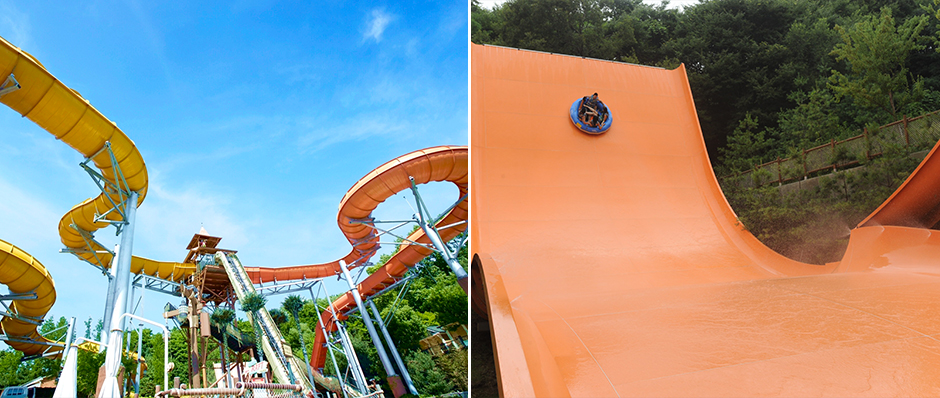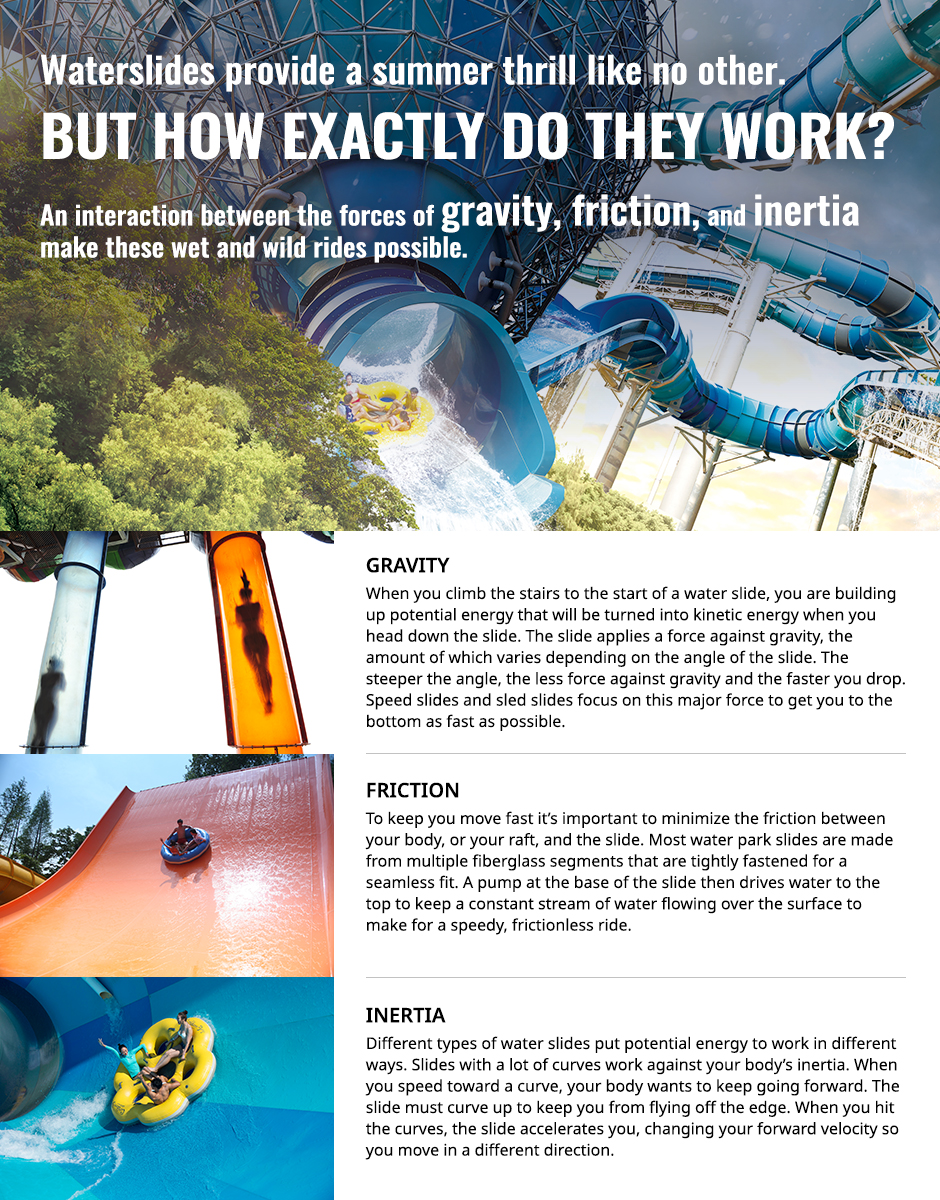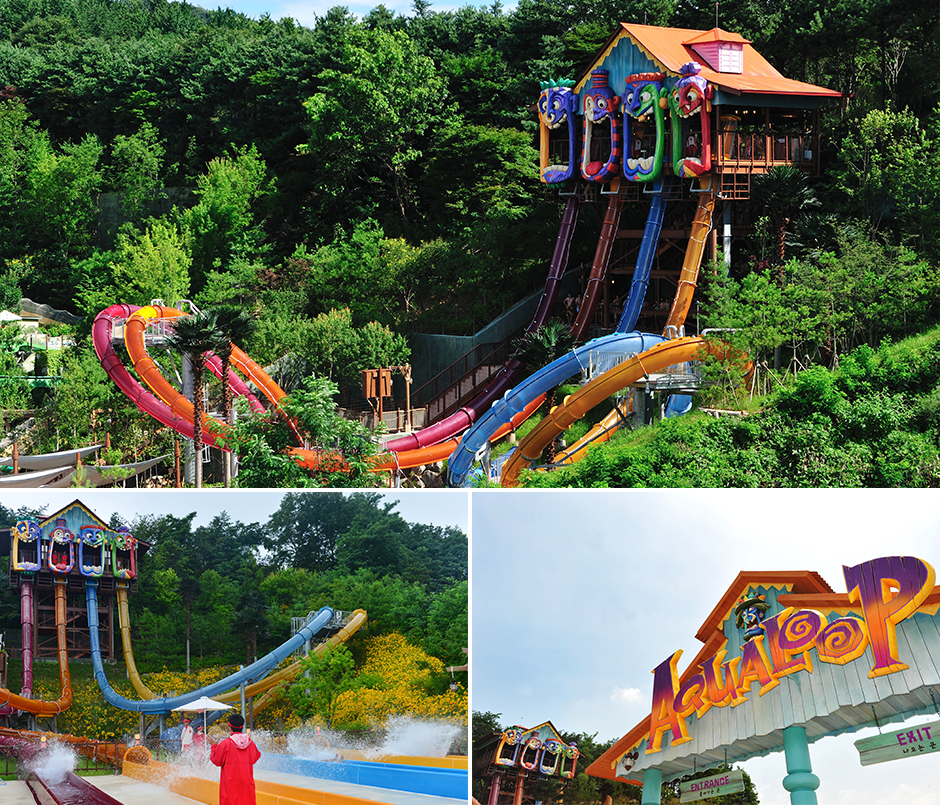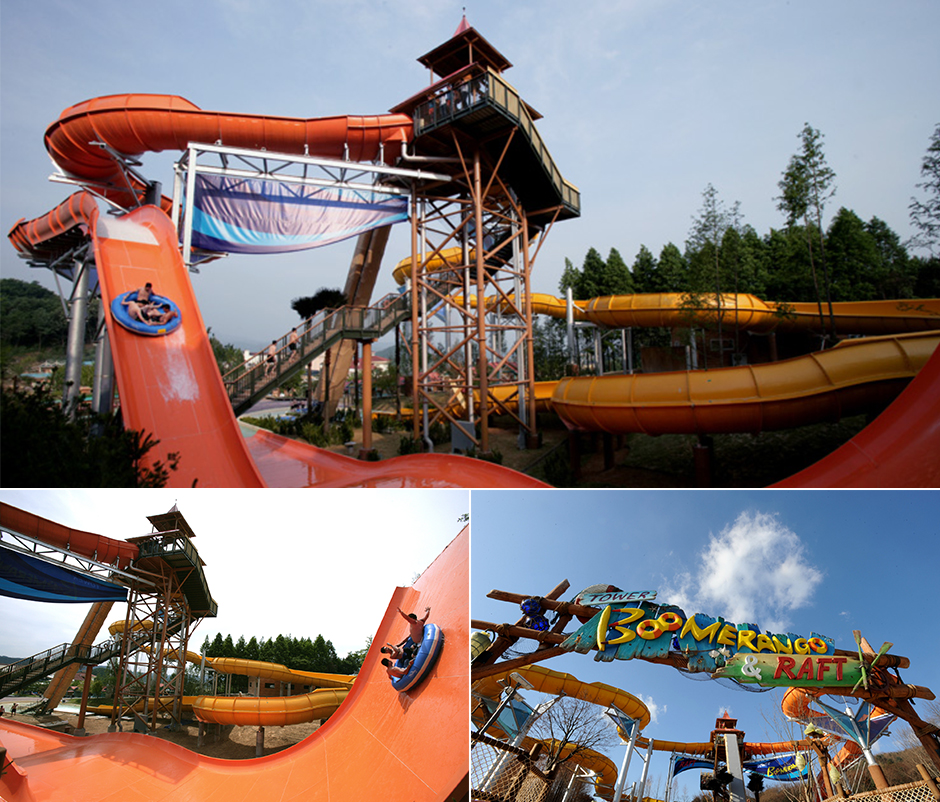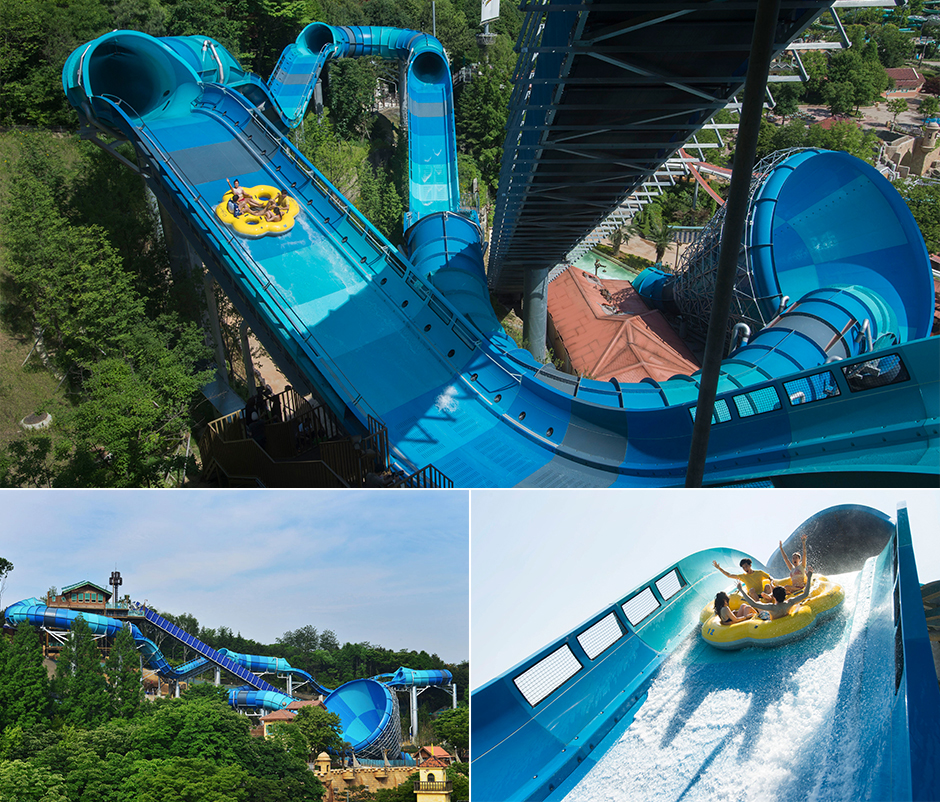Standing 17 meters over the Caribbean Bay water park, some riders have been known to have second thoughts as they step into the Aqualoop and wait for its trapdoor to fall open. A vertical drop and a frothing torrent of water carries park-goers through a thrilling loop, spilling out into a pool below. What better way to confront the summer heat?
As the seasons settles in, Caribbean Bay is once again opening its doors to its most famous and exciting water slides, including Mega Storm, Aqualoop, and the Tower Boomerang Go. But with all those twists, turns, and sudden drops, just how do these slides work without riders flying off the edge? It’s all a simple matter of physics.
The Many Types of Slides
From twisting, turning tube rides, to near vertical drops, there are a wide variety of water slides and each type works in slightly different ways.
Speed slides, for example, are relatively simple, plunging riders straight down a steep incline and dumping them into an exit flume, a long pool at the base, to slow them down gradually. Sled slides are similar, plummeting straight down over a series of bumps and dips, often on some type of raft. Both slide designs move the rider forward in a straight line, making the physics a simple matter.
In serpentine slides, like the Mega Storm, curves and sharp turns snake their way down to the bottom sending riders on an unpredictable journey to the bottom. Rides like Tower Boomerang Go and the Aqualoop use a combination of these types to rides to engineer their thrills.
The Forces of Nature
While each type of slide works a little differently, all water slides are fundamentally a product of three forces: gravity, friction, and inertia. Gravity forces passengers down the ride, while water acts as a lubricant to reduce friction, so the ride is fast and smooth.
On rides with a lot of curves, inertia comes into play. When moving at such high speeds, your body naturally resists changes to movement, including a change of direction or velocity. Your body wants to go in a straight line, even if that means flying off the edge of the slide, which is why large water slides often have large, curved walls. The chart below shows just how each force works on the rides.
The Physics of Caribbean Bay
1. Aqualoop
One of the more unique and adventurous rides at Caribbean Bay, Aqualoop uses the momentum of gravity, along with a high-speed current, to propel passengers around a 360-degree loop. The ride is so fast that riders can feel the g-forces as they make their way around the loop. Unlike the other two slides, the Aqualoop doesn’t use any kind of raft, but uses an enclosed tube to keep riders safe.
2. Tower Boomerang Go
One of Caribbean Bay’s most popular rides, Tower Boomerang Go sends riders down a steep incline then uses the speed and momentum to launch them up a wall. Keeping the friction of the ride predictable and as low as possible is key. Since different materials can generate different amounts of friction as they rub against the slide (cotton for example, will create more friction than a pair of spandex trunks) a raft is used to control friction as a variable. The result is an exhilarating ride that is perfect to share with friends and family.
3. Mega Storm
Standing 37 meters high and full of twists, turns, and all kinds of surprises, Caribbean Bay’s Mega Storm is a crowd-pleasing favorite. Gravity and inertia are hard at work on the slide, taking riders around three sharp turns before diving headlong into a funnel-shaped tornado. Like Tower Boomerang Go, it uses a raft since they get more consistent speeds and their reactions to curves and turns is more predictable than a single person. Curved sides and tunnels are used to control for inertia and make sure riders don’t fall off the edge.
For more information about ride opening dates and operating hours, please visit the Caribbean Bay website.


